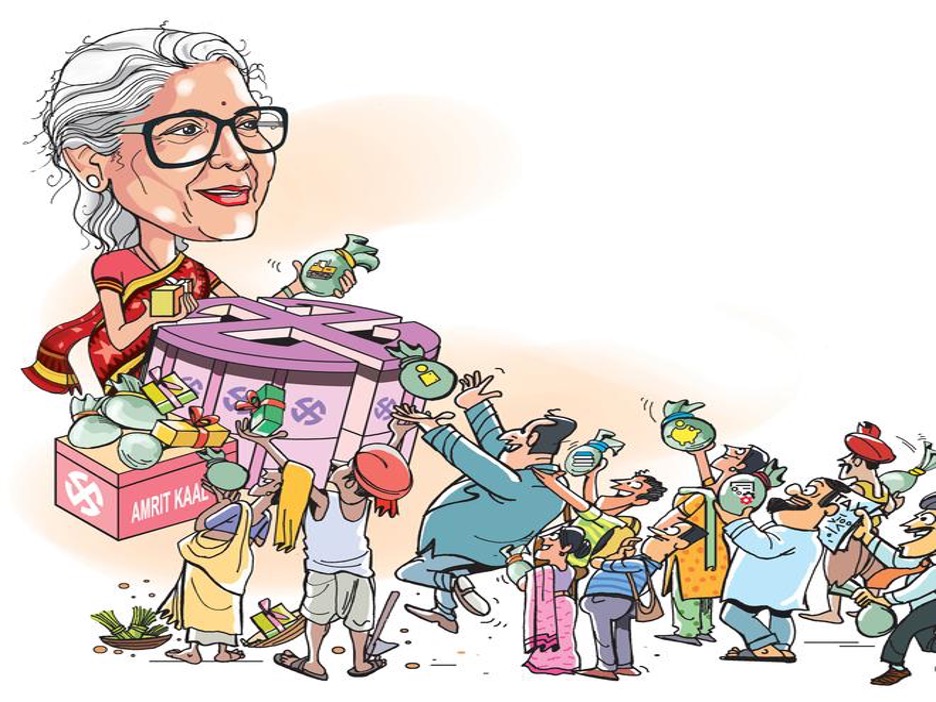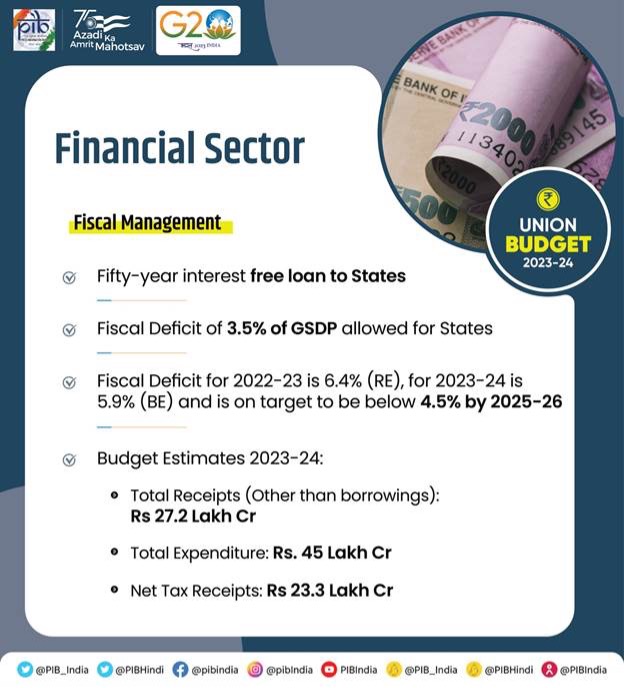Union Finance Minister Nirmala Sitharaman recently presented the Union Budget 2023. It was a triumphant display of women empowerment with a female finance minister giving the budget to a female president for the first time in Indian history.
Part-A included the seven priorities, referred to as ‘Saptarishi’, which were:
Inclusive development
Reaching the last mile
Infrastructure and investment
Unleashing potential
Green growth
Youth Power
Financial Sector
The finance minister mentioned that these priorities were an economic turning point for India and will direct the nation towards ‘Amrit Kaal’. Amrit Kaal is the 25-year period ending at the centenary of India’s independence. The first priority has already been explained in depth in the article “Inclusive Development: Priority 1 of Union Budget 2023” on the blog. In this article, we will deep dive into the remaining six priorities and Part-B.

Reaching the last mile:
The main objective of this priority is to check and track whether the benefits are reaching the common man or not. To provide a sharp focus on this objective, the Modi government over the years has formed the ministries of AYUSH, Animal Husbandry and Dairying, Fisheries, Skill Development, Jal Shakti and Cooperation.
Aspirational Districts and Blocks Programme- 500 blocks for saturation of essential government services across multiple domains have been launched
Pradhan Mantri PVTG Development Mission- Launched to improve the socio-economic conditions of the particularly vulnerable tribal groups (PVTGs) and provide basic facilities to them. ₹15,000 crore will be implemented over the next three years.
Water for Drought Prone Region- Assistance of ₹5,300 crore will be given to drought-prone regions of Karnataka to provide sustainable micro irrigation and filling up of surface tanks for drinking water.
PM Awas Yojana- Amount enhanced by 66% to over ₹79,000 crore
Infrastructure and Investment:
The capital investment outlay is increased to ₹10 lakh crore, up by 33% for the third year in a row, amounting to 3.3% of GDP. Focus areas include:
Railways- Highest ever outlay of ₹2.40 lakh crore provided which is about 9 times the outlay of 2013-14.
Logistics and Regional Connectivity – Investment of ₹75,000 crore (including ₹15,000 crore from private sources) for 100 critical transport infrastructure projects. 50 additional airports, heliports, advance landing grounds, and water aerodromes will be revived.
Urban Infrastructure Development Fund (UIDF)- ₹10,000 crore per annum will be made available to establish the fund which will be managed by the National Housing Bank. It will be utilized by public agencies to create urban infrastructure in Tier 2 and Tier 3 cities.

Unleashing potential:
The objective is to continue to focus on good governance. The government has introduced Jan Vishwas Bill to amend 42 Central Acts and normalize laws with over 39,000 compliances reduced and more than 3,400 legal provisions decriminalized.
Centre of Excellence for Artificial Intelligence- Three centers will be set up in top educational institutions and leading industry players will partner to find solutions in areas of agriculture, health, and sustainable cities.
National Data Governance Policy- To unleash innovation and research by start-ups and academia, access to anonymized data will be enabled.
Entity DigiLocker- Set up for storing and sharing documents online securely, with various authorities.
5G Services- 100 labs for developing applications using 5G services will be set up. They will cover applications for precision farming, smart classrooms, intelligent transport systems, and health care.
Other focus areas include Simplification of the KYC process, Vivad se Vishwas I as a relief for MSMEs, Vivad se Vishwas II for settling contractual disputes, and the launch of phase-3 of the E-courts project.
Green growth:
To achieve the previously set target of net-zero carbon emission by 2070, the Prime Minister has given a vision for “LiFE” or Lifestyle for Environment by encouraging an environmentally conscious lifestyle with green industrial and economic transition.
National Green Hydrogen Mission- Recently launched with an outlay of ₹19,700 crores to reduce dependence on fossil fuel imports.
Energy Transition and Renewable Energy Evacuation- ₹35,000 crore provided for capital investments towards energy transition and net zero objectives. Inter-state transmission system will be constructed with an investment of ₹20,700 crore including central support of ₹8,300 crore.
GOBARdhan scheme- 500 new ‘waste to wealth’ plants will be established for promoting a circular economy.
Bhartiya Prakritik Kheti Bio-Input Resource Centres- 10,000 Centres set up to encourage 1 crore farmers to adopt natural farming.
Other focus areas include support for Energy Storage Projects, Green Credit Program to incentivize environmentally sustainable and responsive actions, PM-PRANAM to promote alternative fertilizers, MISHTI for Mangrove plantation along the coastline wherever feasible, and Amrit Dharohar to encourage optimal use of wetlands and enhance bio-diversity.
Youth Power:
The National Education Policy is formulated to empower the youth or ‘Amrit Peedhi’.
Pradhan Mantri Kaushal Vikas Yojana 4.0- Launched within the next three years with emphasis on-job training, industry partnerships, and alignment of courses with the industry including coding, AI, robotics, drones, IoT, 3D printing, mechatronics, and soft skills.
National Apprenticeship Promotion Scheme- Stipend support to be provided to 47 lakh youth over three years.
Tourism- 50 destinations to be selected and developed as a complete package with relevant aspects to be made available on an App.
Unity Mall- Set up in states for promotion and sale of their own ODOPs (one district, one product), GI, and handicraft products, and for providing space for such products of other States.
Financial Sector:
Credit Guarantee for MSMEs- Infusion of ₹9,000 crore in the corpus and cost of credit to be reduced by about 1%.
Mahila Samman Savings Certificate- Made available for a two-year period with a deposit facility of up to ₹2 Lakh at a fixed interest rate of 7.5%.
Setting up of National Financial Information Registry and Central Data Processing Centre.
The deposit limit for Senior Citizen Savings Scheme was enhanced to ₹30 lakh.
Part-A of the budget was concluded with the fiscal management figures and estimates. The attempt is to bring the fiscal deficit below 4.5% of GDP by 2025-26.

Part-B (Tax proposals for the year):
Personal Income Tax- The rebate limit in the new tax regime has been increased to ₹7 lakh and the new personal tax regime has been changed. The standard deduction has been extended and the highest surcharge rate has been reduced.
Indirect Tax Proposals- Simplification of tax structure with fewer tax rates to help reduce compliance burden and improve tax administration.
Some other reforms include a common IT return form, deployment of about 100 Joint Commissioners for disposals of small appeals in direct tax matters, deduction from capital gains on investment in residential house capped at ₹10 crore, and proposals relating to MSMEs and start-ups.
The total revenue foregone due to changes in taxes will be about ₹35,000 crore annually. It will be interesting to see how all these reforms will be implemented over the coming years.
Written by: Nasha Rana
Edited by: Labdhi Shah
